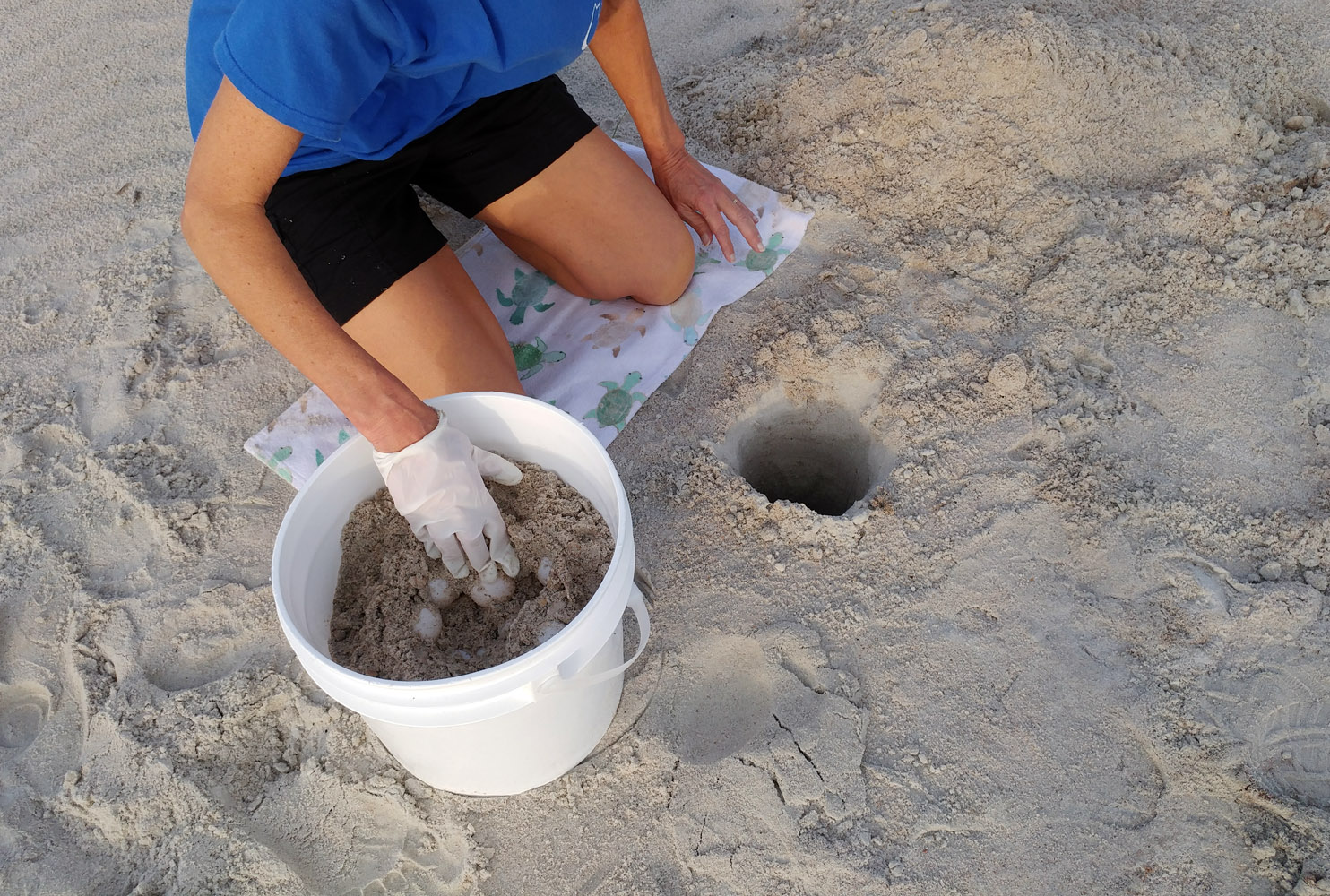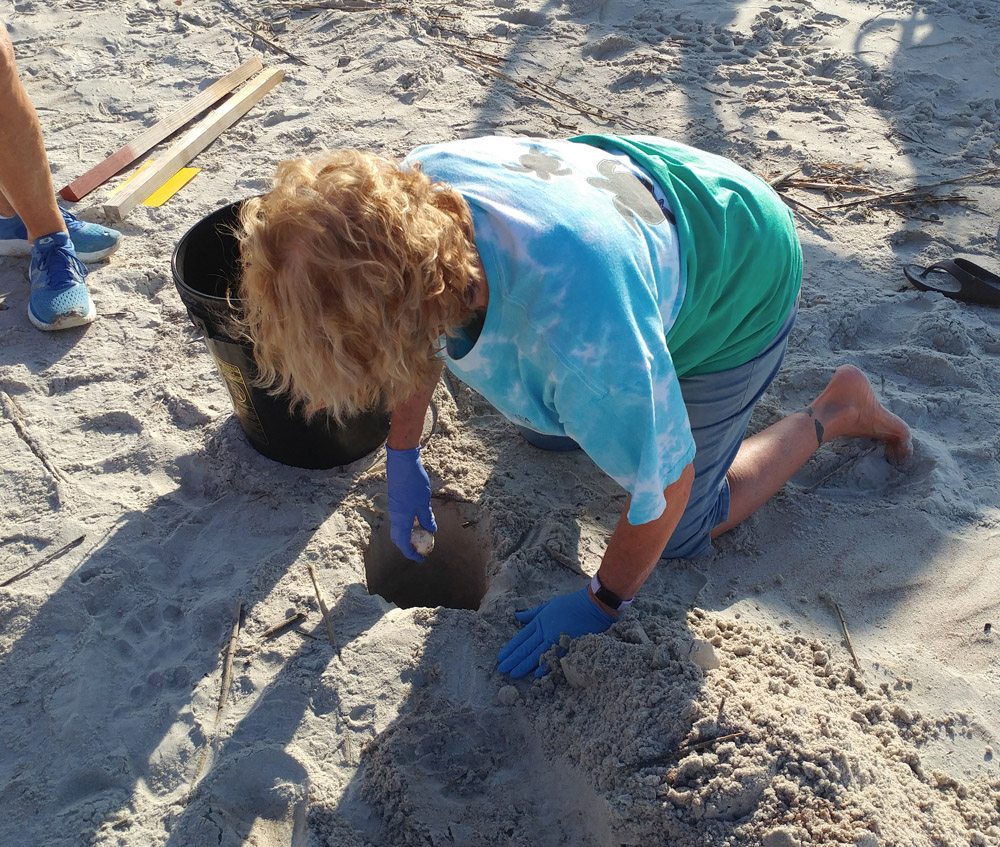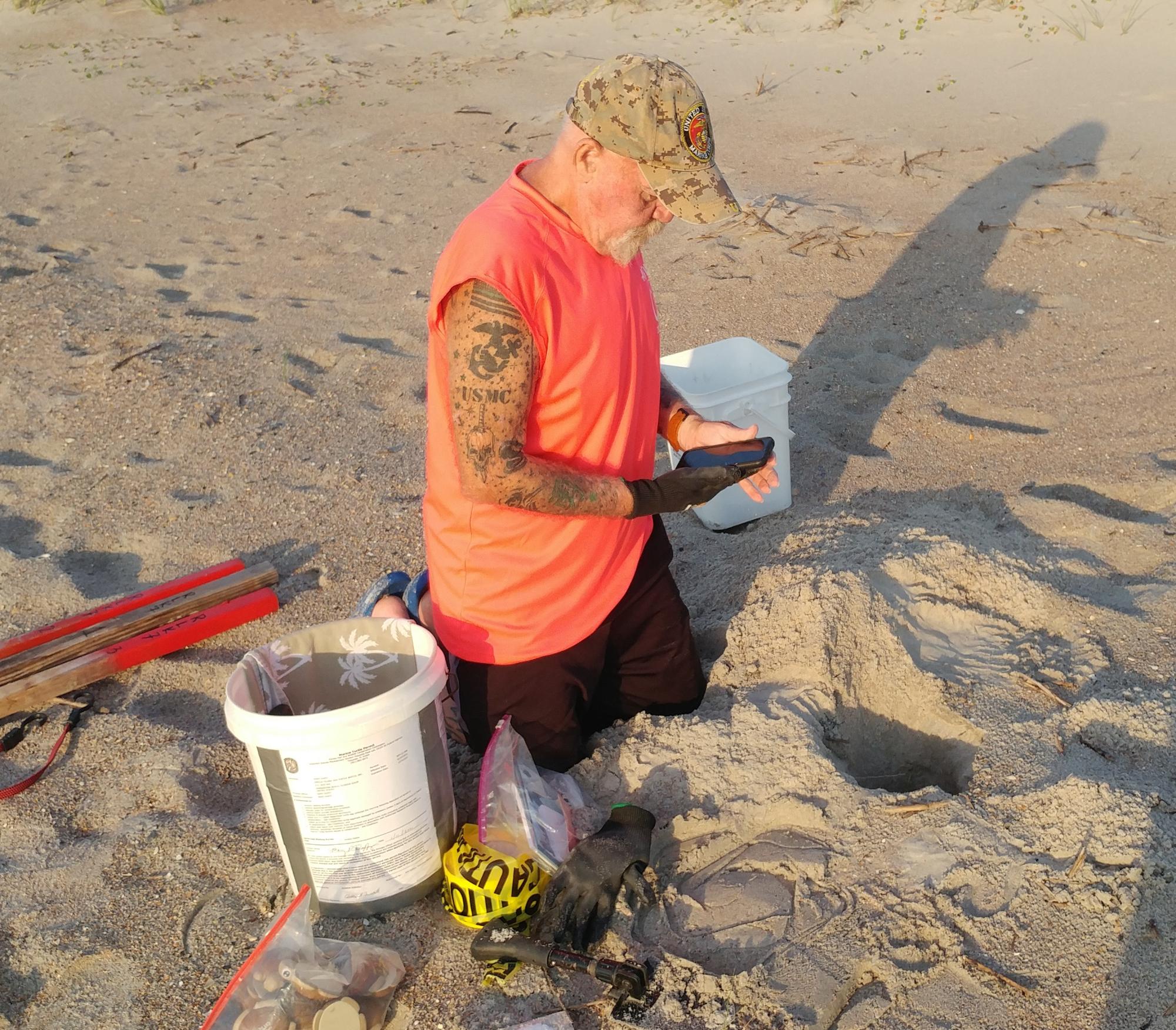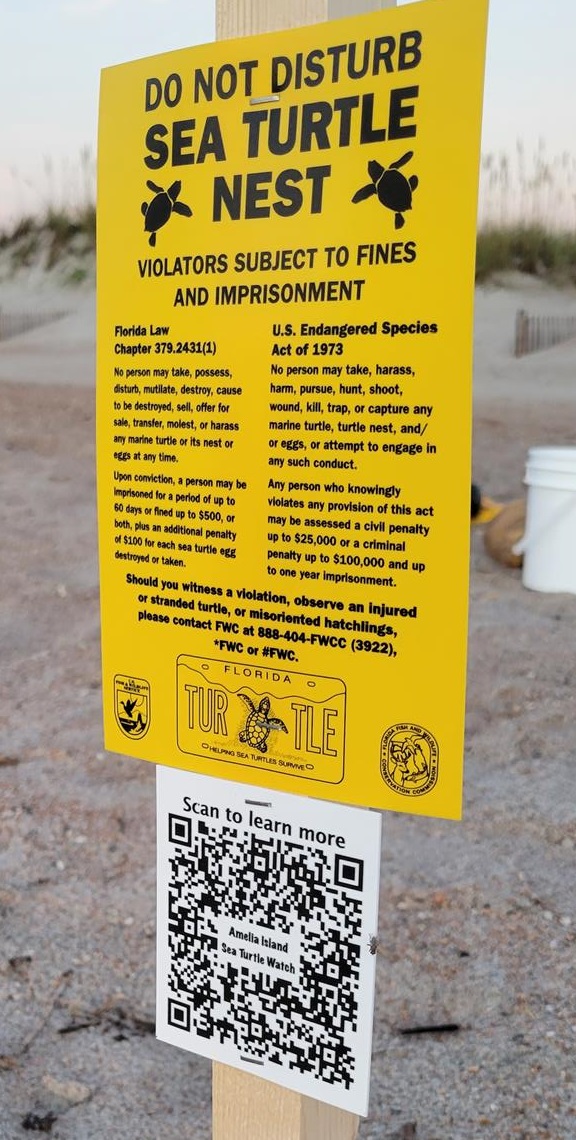


New E-mail Address (effective 1/5/23)
ameliaislandseaturtlewatch@gmail.com
Please use this address for general inquiries. We monitor it almost every day. For urgent matters, please continue to use our telephone number.
2025 Organizational Meeting
We held our 2025 season new volunteer signup and training at our Organizational Meeting at 6:00 PM on April 7, 2025 at the Fernandina Beach Public Library meeting room. Our volunteer walker roster is full for the 2025 season. See our Help/Volunteer page for more information.
If you find a sea turtle on the beach
If you find a sea turtle on the beach (that is not nesting), alive or not, please let us know immediately. We will examine the turtle and take it to a sea turtle hospital if necessary. Sea turtles can become stranded on our beach any time of year. A text with picture and location to our phone number is best.
Our QR Code education website
We placed QR codes on some of our nests this past season to help folks learn more about the sea turtles that are nesting on our beach. This other AISTW website is for general education about turtles as well as briefly explain what we (AISTW) do. The QR code link is Scan to learn more.

Beach Renourishments - 3/16/25
2025: There are two renourishment projects this year. The Kings Bay beach renourishment project for the north end of the island started in January and was completed in February prior to our 2025 Turtle season. This is an Army Corps of Engineers project, managed by the Army Corps of Engineers that dredges sand from the St Mary’s river area (as part of dredging for the Kings Bay Submarine base access)
The second project, called Nassau County Shore Protection project, will start in April or May and will dredge sand from near offshore just south of the south jetty at St. Mary’s river and place sand from just north of Main Beach (East Second Street, Access 5N) to just south of Sadler Road (C Street, Access 22), 2.75 miles of beach. Because it will have to occur after the first project is completed, it will occur during sea turtle season. This is an Army Corps of Engineers project. It will have to have approval from the Florida Department of Environmental Protection and the Florida Fish and Wildlife Commission in a manner that protects nesting sea turtles. The Amelia Island Sea Turtle Watch expects that our trained and permitted volunteers will be moving sea turtle nests just as we did in 2021, when a renourishment project along The Plantation beaches also occurred during sea turtle season.
2024: The Kings Bay beach renourishment project for 0.6 miles of beach, 152,071 cubic yards of sand, at the north end of the island was completed by March, prior to our 2024 Turtle season. This was an Army Corps of Engineers project that dredged sand from the St Mary’s river.
2023: The Kings Bay beach renourishment project for 0.4 miles of beach, 62,583 cubic yards of sand, at the north end of the island was completed by March, prior to our 2023 Turtle season. This was an Army Corps of Engineers project that dredged sand from the St Mary’s river.
2022: The Kings Bay beach renourishment project for 3.2 miles of beach at the north end of the island started in January, 2022, and was completed mid April, just prior to our 2022 Turtle season. This was an Army Corps of Engineers project that dredged sand from the St Mary’s river area.
2021:The beach renourishment project for the south end of the island started on July 27th, 2021. It was completed on January 15, 2022. A total of about 1,800,000 cubic yards of sand was placed along the 3.2-mile project length. This was a South Amelia Island Shore Stabilization Association (SAISSA) project and was managed by Olsen Associates (now Foth Infrastructure & Environment LLC).
2
See https://olsen-associates.com/sai2021/schedule/
Because that renourishment took place during the 2021 sea turtle season, the FWC (Fish and Wildlife Commission) required us to move all 47 sea turtle nests to a safe location outside the project area by 9am each morning. We carefully interpreted every track and disturbed area to determine whether or not it was a false crawl or a nest, drawing on all of our track and nest interpretation skills and experience to be ensure that no nests were missed. Because of
For each nest, we carefully removed each egg one at a time and placed it gently into a bucket padded with sand. We transported the bucket to a new location at various places from Summer Beach up to North beach. We used the information from the original nest to create a new nest that was similar in size and depth for the number of eggs moved. The eggs were then very carefully placed into the new nest. We then documented the new nest as well, marking it with an R in front of the name.
We are often asked if this will harm the development of the eggs. Experience has taught us that when the nest is moved before it is 24 hours old, the eggs will begin to develop normally in the new location. For these nests, our nest success was very close to nests left in place (see our Historical Data page for the details).
022: The Kings Bay beach renourishment project for 3.2 miles of beach at the north end of the isla started in January, 2022, and was completed mid April, just prior to our 2022 Turtle season. This was an Army Corps of Engineers project that dre
dged sand from the St Mary’s river area. 2021:The beach renourishment project for the south end of the island started on July 27th, 2021. It was completed on January 15, 2022. A total of about 1,800,000 cubic yards of sand was placed along the 3.2-mile project length. This was a South Amelia Island Shore Stabilization Association (SAISSA) project and was managed by Olsen Associates (now Foth Infrastructure & Environment LLC).


